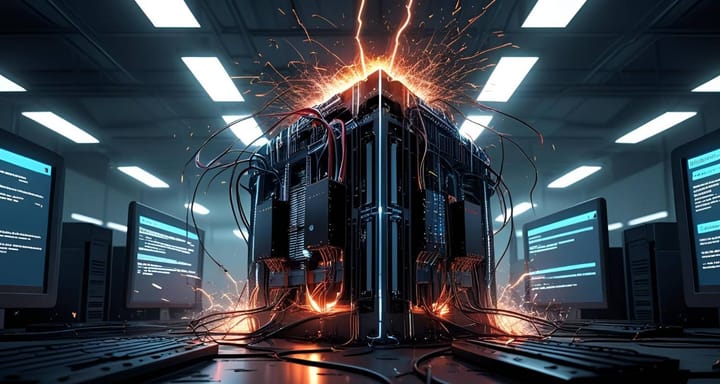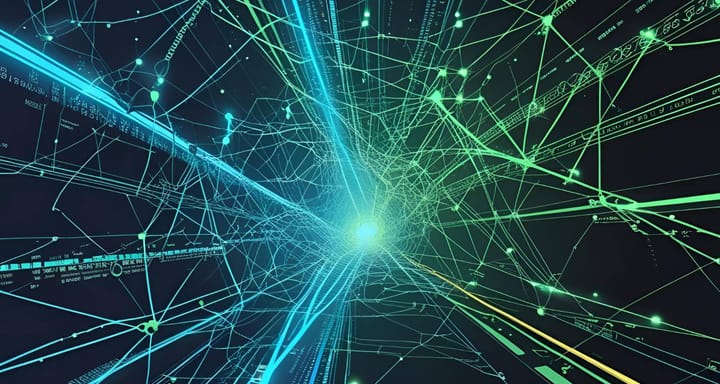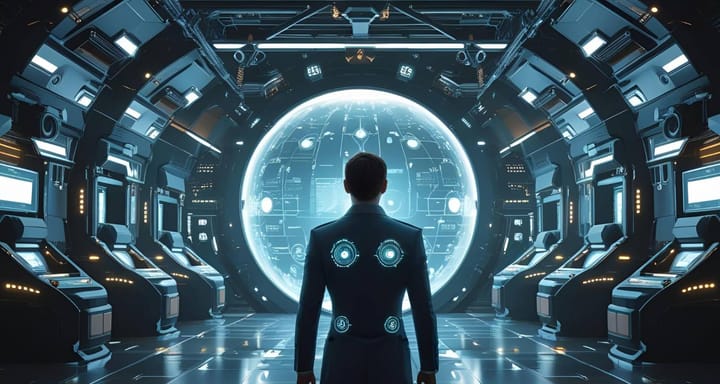Strong AI vs Weak AI: Understanding the Differences
Lets discuss the differences between strong ai and weak ai.
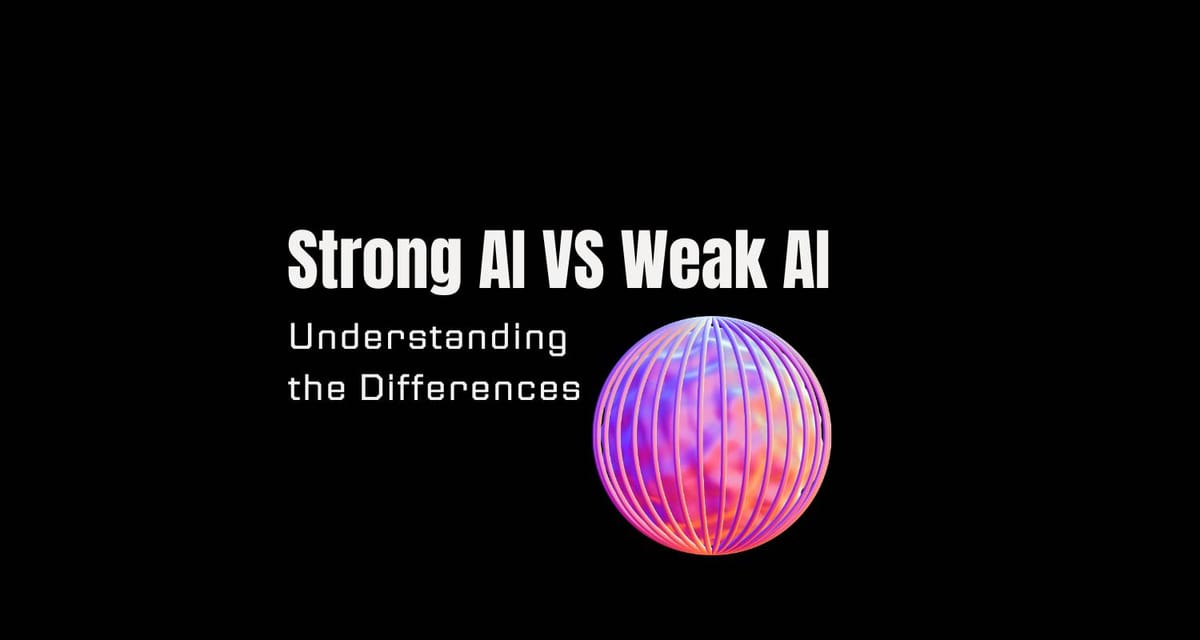
Artificial intelligence is beginning to impact businesses, sparking curiosity and debate over its capabilities and forms.
Two distinct categories of AI, strong AI and weak AI, have emerged, each with its unique applications and theoretical boundaries.
Weak AI, also known as narrow AI, excels in performing specific tasks, such as language translation or driving a car autonomously. It operates within a limited context, brilliantly handling particular functions it's been programmed to execute.
On the other hand, strong AI, or artificial general intelligence (AGI), represents the aspirational creation of machines that can understand, learn, and apply intelligence broadly across a range of tasks, similar to a human being. It's a concept that scientists and technologists have pondered over since the inception of computing, signifying a future where machines could potentially solve problems, make decisions, and plan for the long term without human intervention.
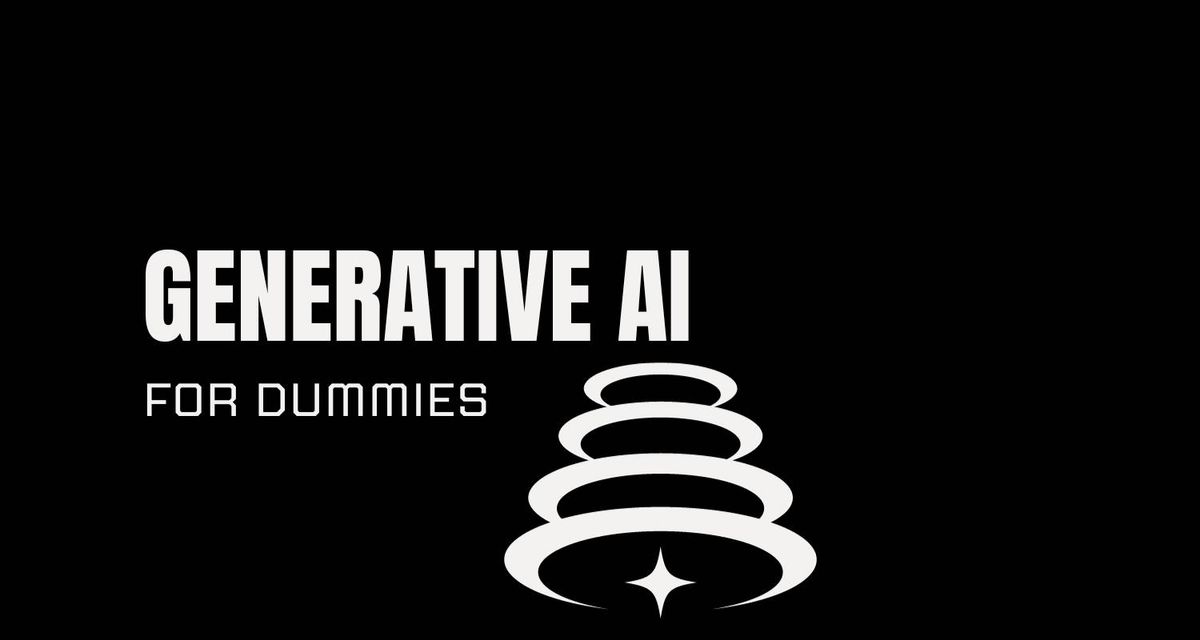
The difference between strong AI and weak AI raises profound questions about the future of technology and its role in society. While weak AI systems are becoming increasingly sophisticated and integral to various industries, strong AI remains largely theoretical, posing challenges in both development and ethics. Understanding the capabilities and limitations of both strong and weak AI is crucial for grasping the trajectory of technological progress and its implications.
Defining Strong AI and Weak AI
As we explore the realms of Artificial Intelligence, understanding the distinction between Strong AI and Weak AI is crucial. Strong AI embodies machines with the capability to perform any intellectual task that a human being can, while Weak AI refers to systems designed to excel at specific tasks.
Key Characteristics of Strong AI
- Autonomy: Strong AI systems are equipped with the ability to operate without human intervention, possessing intellectual faculties that mirror human cognition.
- Consciousness: These systems are theorized to have a form of self-aware consciousness, allowing them to perceive and understand the world as humans do.
Key Characteristics of Weak AI
- Task-Oriented: Weak AI is designed to excel at singular, often complex tasks, such as providing movie recommendations or driving a car.
- Limited Scope: Unlike the theoretical Strong AI, Weak AI operates within strict constraints, unable to exceed the boundaries of its programmed expertise.
Historical Development
The historical development of artificial intelligence (AI) showcases how the field has grown from early theoretical concepts to today's diverse and complex applications.
Origins of AI Concepts
Artificial intelligence was first conceptualized in myths and philosophy, but it was during the mid-20th century that the foundational ideas of AI were formed. Pioneering computer scientist Alan Turing proposed the Turing Test as a measure of machine intelligence in 1950, a concept that continues to influence AI development.
Evolution of Strong AI
The aspiration to create machines that could replicate human intelligence led to the concept of Strong AI. This term signifies the pursuit of an artificial intelligence that can understand and learn any intellectual task that a human being can. The progress in this area has been slow and gradual; real-world examples of Strong AI still remain theoretical, with contemporary AI systems being considered weak AI.
Evolution of Weak AI
In contrast, Weak AI, also known as narrow AI, refers to AI systems that are designed to handle specific tasks. From early expert systems of the 1970s to modern machine learning algorithms, Weak AI has seen rapid growth. This is partially due to significant improvements in computing power and data availability, which have led to AI systems like those used for image recognition, natural language processing, and automated driving.
Technical Comparisons
When comparing strong AI to weak AI, it's crucial to consider their differences in terms of computational power requirements, learning and adaptability, and autonomy levels. These technical aspects are fundamental in understanding how each type of AI operates and the potential they hold for future applications.
Computational Power Requirements
Strong AI typically demands significant computational resources. This is due to its need to process massive amounts of data and perform complex tasks like learning, reasoning, and understanding context. For example, strong AI systems might require advanced processors and large-scale neural networks that can mimic human cognitive functions.
In contrast, Weak AI is optimized to handle single tasks and therefore generally has lower computational requirements. These systems are usually designed for efficiency in specific applications, such as language translation tools or personalized content recommendations.
Learning and Adaptability
The learning capabilities of strong AI are profound; they not only learn from large datasets but also have the potential to self-improve through ongoing learning processes. This means that strong AI can refine its algorithms independent of human intervention, adapting to new data with considerable agility.
Weak AI, while it can also learn from data, is limited to its programmed capabilities. These systems improve within their domain of expertise but lack the ability to transfer knowledge across different domains or adapt beyond their original programming.
Autonomy Levels
Autonomy is where strong AI shines, with the ability to operate independently and make decisions in a manner akin to human thought processes. These systems understand objectives and can navigate complex environments without explicit human direction.
Conversely, Weak AI operates within a structured set of parameters and depends on human-defined rules and input. Its autonomy is restricted to performing predefined tasks, often requiring explicit instructions and oversight.
Applications and Implications
The applications and implications of AI technology stretch far and wide, influencing every industry and raising important ethical questions.
Strong AI and Weak AI serve very different purposes and come with their unique sets of considerations. Here are some applications of strong AI and weak AI in everyday use:
Strong AI in Practice
Strong AI, while still largely aspirational in its fullest sense, has the potential to revolutionize numerous fields by exhibiting human-like cognitive abilities. An example of what might be achieved with Strong AI includes self-improving robots working in space exploration, capable of adapting to unforeseen challenges without human intervention.
Weak AI in Everyday Use
Conversely, Weak AI is already deeply embedded in daily life. From voice-activated assistants guiding users through cooking recipes to algorithms suggesting personalized content streams, Weak AI offers targeted functionality that enhances convenience and efficiency in routine tasks.
EX: Alexa is an example of weak AI.
Ethical Considerations
With the advancement of AI, ethical considerations come to the forefront. One should consider the impact of AI on job displacement, the privacy issues surrounding data collection, and the level of autonomy of AI decisions.
Challenges and Limitations
Progress in artificial intelligence has been significant, yet one encounters challenges and limitations in both strong and weak AI that impede the path toward advanced, human-like AI systems.
Technical Hurdles
Technical hurdles in AI span from computational constraints to algorithmic complexity. Strong AI aims to match human cognitive abilities, but its development is restrained by current technological capabilities. It requires vast amounts of data and processing power that far exceed what's typically available. Meanwhile, weak AI, while useful in specific domains such as driving a car, faces limitations in transferring knowledge across different tasks, which is an innate human ability.
Social and Regulatory Challenges
The implementation of AI, particularly strong AI, encounters ethical dilemmas and regulatory scrutiny. Society must address concerns such as privacy, deepfakes, employment displacement, and accountability. Moreover, regulating entities struggle to keep pace with the rapid advancement of AI technologies, which is crucial for ensuring safe integration.
The growing capabilities of weak AI in sectors like the financial industry also prompt discussions on regulation and ethical use.


